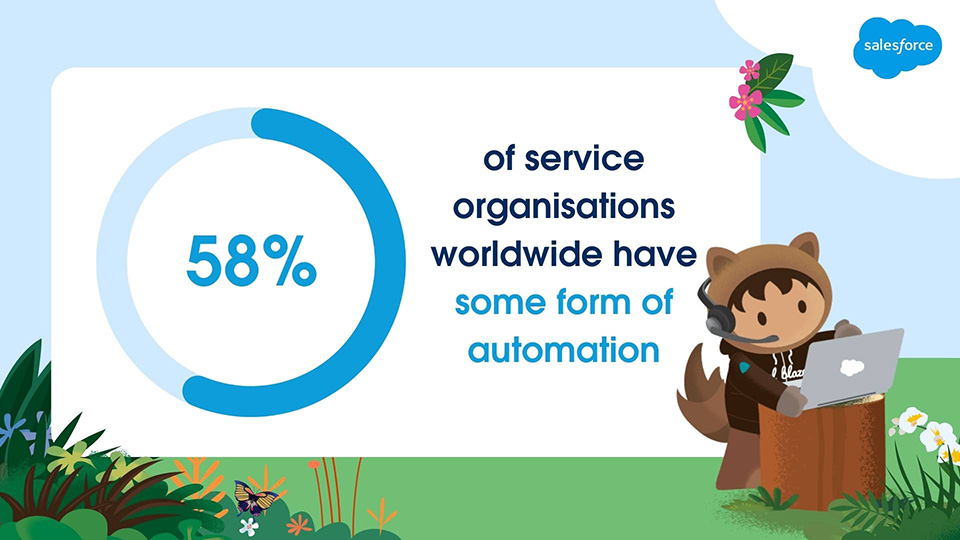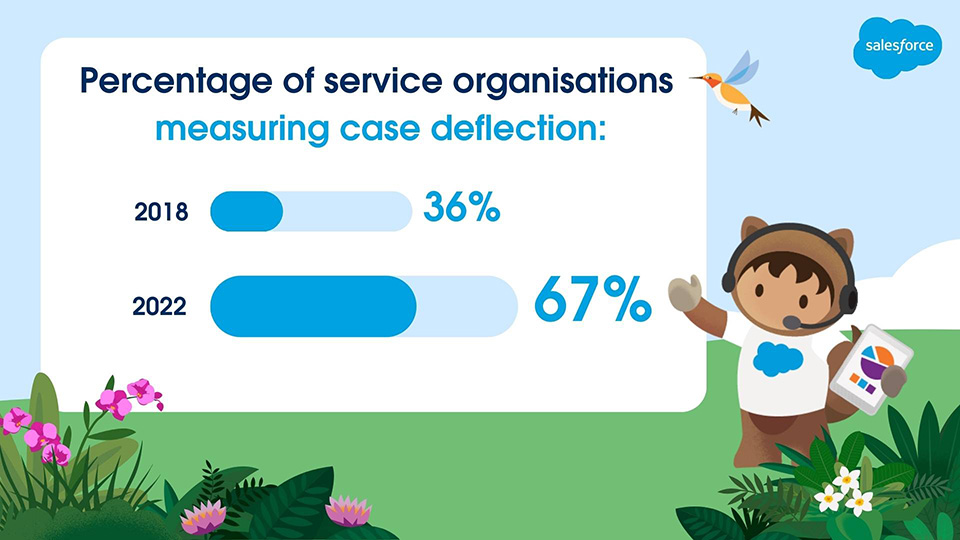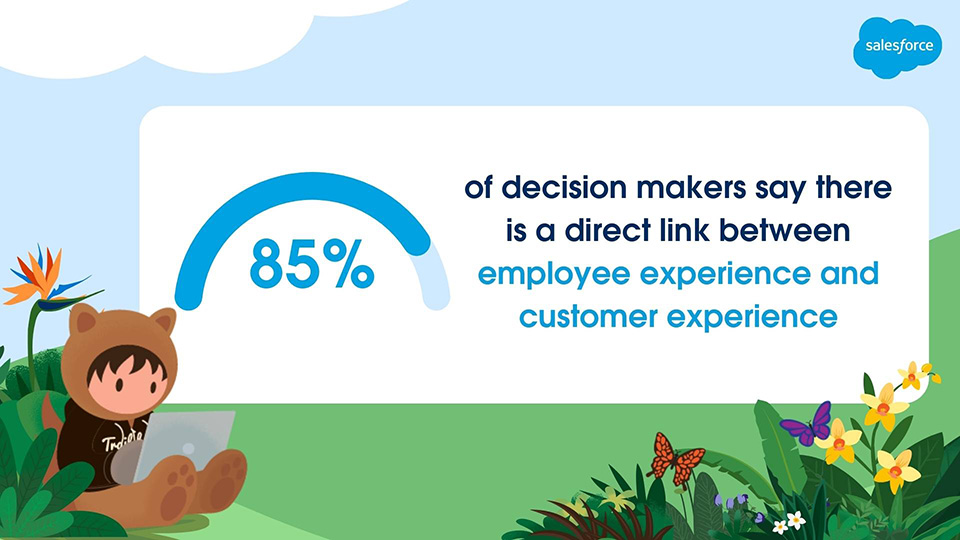Get your FREE 30-day trial.
Start by selecting a product:
How is the role of service changing? Findings from the latest State of Service, Fifth Edition report show that customer service has evolved. Instead of a department that handles customer complaints, it is now a cornerstone of any successful organisation.
The last few years have seen a major shift in the way that customers interact with the businesses they buy from. In turn, businesses are changing the way they approach customer service.
Telephone calls and email once dominated customer service interactions. But in recent years, they have dropped in popularity, with channels such as video support and chatbots becoming more widely available.
As more customers are choosing to communicate using more than one channel, service teams’ priorities are changing. New metrics, designed to allow managers to make meaningful change, are now being measured.
This has led to organisations everywhere choosing to automate their processes to improve productivity. Nearly three fifths of service organisations worldwide have some form of automation assisting their customer service teams.

As the saying goes, you should measure what matters most. The State of Service report reveals that service managers around the world are changing what they measure to match business priorities.
Customer satisfaction is still the most popular metric among service teams, but its popularity is dropping. In 2020, 87% of organisations tracked customer satisfaction, but the number decreases to 74% in 2022.
Customer retention, revenue, and average response time have also dropped. In their place, service-level agreement (SLA) performance, first-contact resolution, and cost per contact have become part of service organisations’ reporting.

Companies can find it difficult to balance speed and quality in service. Since 2020, the number of service decision makers who say that speed and quality are equally important has dropped by 9%. At the same time, The number of decision makers who say speed is more important has more than doubled.
To increase speed without compromising quality, many companies are turning to automation for answers.
Fifty-eight percent of businesses around the world are using automation processes/workflows. The research shows that organisations across the region are ahead of the curve in implementing automation. In Indonesia and Taiwan, 70% of service organisations are using automation processes, and in the Philippines that number is 71% — much higher than the global average.
The use of artificial intelligence (AI) — a tool that often powers automation — is also popular across the region. Companies in Singapore, Thailand, Vietnam and Taiwan use AI more than the global average. For instance, Fulbright University in Vietnam is using AI to make students’ lives easier. AI may even be able to flag potential problems for students before they occur.
Our research also shows that 57% of global customers prefer to engage with companies through digital channels, and 59% prefer self-service for simple questions. More than half of customers have used chatbots, and nearly two-thirds have used a self-service portal.
Insights from the State of Service reveal that the mix of channels that customers like to use is changing. In 2020, 96% of organisations around the world used the telephone for customer service interactions. Now, in 2022, that figure is down to 77%. For ASEAN organisations, that figure goes as low as 74% in Thailand.
The numbers for email have dropped in a similar way. Only 76% of global organisations use email for customer service, compared to 92% in 2020.
In their place, digital channels such as video support, and online communities have become more widely adopted.
The cost savings and efficiency benefits, as well as swift resolutions for customers, mean that automated service through bots is likely to become even more popular in the years to come.

There are several things an organisation can do to improve the experience of their workers. Service organisations around the world have offered flexible schedules, wellness benefits, and improved career progression opportunities, in an attempt to enhance employee experience.
Another way to improve the day-to-day experience of your service teams is to ensure that they have the right tools and resources they need to carry out their tasks efficiently. This becomes especially important when it comes to customer data, so that service teams can provide effective service without having to consult colleagues from other teams.
In the report, teams were asked whether they had access to the same customer relationship management (CRM) tool as other departments in their organisation. Sixty-two percent of organisations around the world reported that they did. Across the region the picture was slightly different. Some countries have fewer organisations sharing the same CRM technology than others:
Percentage of service professionals who say all departments use the same CRM software:
Shared tools can lead to other benefits too — 95% of organisations that use more than one Customer 360 app report that they see improvements in efficiency and productivity, and 96% say that they have met or exceeded their return on investment (ROI) targets.
Discover how 8000+ service leaders are driving cost efficiency and meeting real-time customer needs. Read the full State of Service report for an in-depth look at customer service trends.